
I was browsing the net again today, and I happened across this article titled 'Isis Magic'. It really caught my eye, and I really enjoyed it, and I wanted to share it with you all.
*************************************************************************************
Isis Magic
From "Isis Magic: Cultivating a Relationship with the Goddess of 10,000 Names" by M. Isidora Forest
Posted by: DailyOM
The Great Goddess Isis
The Goddess is alive. She always has been.
But during the last two millennia, at least here in the West, She has been obscured. Occulted, but not erased, Her life-enhancing worship did not die. It was secreted within the inner teachings of esoteric societies, trivialized as folk custom, or enveloped within a mass of religious practices that officially denied Her Divinity while continuing to build cathedrals in Her name. For even though the Christian Fathers had long warned against making Mary into a Goddess, She functioned as Goddess1 for Her many adoring worshippers.
And this is precisely the point.
She is.
Official sanction has nothing to do with Her reality. Diminishing Her rituals into folk custom has nothing to do with Her power. Denying Her existence has nothing to do with our human need of a relationship with Her. Our humanity calls out for our Divine Mother, Sister, Grandmother, and Wife. We need the Creatrix, the Warrior Woman, the Wise Queen, the Lover and the Beloved, and the Divine Feminine Mystery. We need the entire range of aspects that the wholeness of Goddess provides us. God, too, needs Her; for without Her, He is incomplete.
Throughout the history of the worship of Feminine Deity, She has been known by many names. Modern Goddess worshippers have understood, with Dion Fortune, that ¿all the Goddesses are one Goddess.¿ This is expressed in a common hymn in the Goddess community that sings the names of many Goddesses as a way to invoke the one Goddess: Isis, Astarte, Diana, Hekate, Demeter, Kali, Inanna!
This insight is not new. But it was new at one time worshippers of the Goddess Isis came to the same realization during the centuries surrounding the beginning of the Common Era (c.e.). When the religion of Isis and Her Greco-Egyptian consort Sarapis was exported from Egypt at that time, They became known to Their worshippers as universal Deities. No longer tied to Their native country, Isis and Sarapis were worshipped by Egyptians and non-Egyptians alike in lands far from Egypt's national boundaries. This innovation, originating in the increasingly universalistic religion of Isis,2 was to become a vital concept in the emerging Christian religion as well.
At the height of the Isiac religion approximately the second century c.e.Isis was known throughout the Mediterranean world as the Goddess of Ten Thousand Names, or in Greek, Isis Myrionymos. While other Goddesses certainly underwent syncretism and were invoked by a variety of names, the phenomenal extent to which Isis was universalized, and the great popularity of Her religion with high-born and low-born people of both sexes, put Her in a unique position. For many people in the polytheistic Greco-Roman world, Isis became the Goddess.
Following this established tradition of the Isiac religion, this book, too, focuses on Isis as The Goddess. Like Isis devotees before us, we will build a relationship with The Great Goddess by focusing our search for the Divine Feminine through the religion of one Goddess. As She was for so many during the thousands of years of Her worship, for us, for now, let that One be Isis of the Ten Thousand Names.
She will take us far. We will truly encounter Isis as Myrionymos not only in Her Egyptian aspects, but also as She was worshipped in the Hellenistic world and eventually throughout the Roman Empire. We will also explore beyond these ancient antecedents to the new ways women and men can relate to Her today when more and more people once again hunger for the love of Goddess.
Those who do not know Isis will be introduced to Her, and those who do know Her will find advanced techniques for deepening a relationship with Her. The most well-known myth about the Goddess suggests itself as a metaphor for the purposes of this book: When Isis' husband, Osiris, was murdered, the Goddess searched for the scattered pieces of His body in order to resurrect Him. She found all but the phallus, which She fashioned anew from gold and thereby conceived the Divine Child, Horus. The first part of this book is the result of my search for the scattered pieces of the Isis religion and my desire to bring them together in one easily accessible place. I have included retellings of Her myths as they are recorded in a variety of sources. I have collected pieces of Her story from the Book of Coming Forth by Day (popularly called the Book of the Dead), the Coffin Texts, and Pyramid Texts, as well as invocations, hymns, aretologies, inscriptions, and other documents that span thousands of years of Her worship. Together we will explore the many aspects of Isis as She was honored by our ancestors: as Primordial Deity, Divine Mother, Lady of Magic, Goddess of Nature, Patroness of Women, Lady of Sacred Sexuality, Goddess of the Mysteries, and Mistress of Hermetic Wisdom. We will see how She remained present, although hidden, even during the centuries of Christian religious exclusivity in the West and how She is once again emerging to cradle us in Her loving arms.
Part Two of the book is like the refashioning of the golden phallus and the birthing of the Child. It is a way of bringing new life to this ancient worship by providing modern rituals, devotions, meditations, prayers, and other practices for the worship of Isis today. The practices you find here are the results of many years of research into the ancient practices of the Isis religion and the inspiration of over fifteen years of personal devotion to Her. If you are drawn to this Ancient and Living Goddess, I offer this to you as a way of making a genuine and enduring connection with Isis.
The Meaning of the Worship of Goddess Today
As we near the end of the second millennium c.e. fifteen hundred years after the closing of the last great Pagan temple in the Christian Empire, the Temple of Isis at Philae in southern Egypt, we are fortunate to be witnessing in the West a re-emergence of a conscious desire for the experience of Feminine Deity.
The femininity of Deity is a very old idea. If we can judge by the vast numbers of prehistoric female statuettes that have been found and interpreted as Goddess figurines, it may well be that Feminine Deity as the Great Mother of All was humankind's original Deity. Feminist theologians theorize that as the rule of men grew stronger in the human sphere, so the rule of male Deity was thought supreme in the Divine. The once all-powerful Goddesses were stripped of Their omnipotence by being given Divine husbands and fathers to Whose desires and dictates They were supposedly subject, just as human women were truly subject to those of their own male family members.
With the spread of institutionalized Christianity in the West, the acceptability of the concept of the Divine Feminine was even more severely diminished. The established Church fought the idea of Mary as Goddess at every turn. But humanity's need for Goddess would not be subdued. In practice, Mariolatry (the worship of Mary) has been widespread among Christians, and esoteric groups have continued to hand down the Mystery of a feminine aspect of God, recognizing the spiritual truth of Her existence even while being forced to hide it under a cover of orthodoxy.
Today we are seeing a renaissance of the worship of Goddess, a development crucial for humanity's balanced spiritual growth. For both women and men, the way we image the Divine is vitally important. Our idea of what Divinity is of Who Divinity is defines how we understand the Divine Mystery and influences how we as human beings see each other and ourselves.
The most well-known creation myth in Western Judeo-Christian cultures, the story of Adam and Eve, says that God created man in His image and then created woman in man's, she being formed from his rib. So in this myth, women are not direct images of God as men are. They are denied direct formation from a Divine pattern. They are denied direct connection to the one, male God. In these cultures, and in the religions they created, that which is Divine is male. Masculine ways of being define God's ways of being. He is a Divine Father. He is a Divine Husband. He is a Judge and a Ruler. Woman, created second, is of secondary importance. She is inadequate as an image of God; she is not man's equal.
Woman's inadequacy was specifically what many of the early Christian Fathers taught. Since woman was not directly created in God's image and had no uninterrupted connection to God, she could only hope to touch Him through her husband. Paul writes that a man is the image and glory of God: but the woman is the glory of the man. For the man is not of the woman; but the woman of the man. Worse yet, woman was even considered opposed to God. She not only disobeyed Him by eating of the fruit of the Tree of Knowledge, but she seduced Adam into joining her in that disobedience. For her sin, woman was sentenced to suffer everlasting punishment in the form of subjugation to man and agony in childbearing. Man, for his part, was sentenced to work.
For individual women and for women as a whole, the psychological and political consequences of living in a constant state of Divinely decreed inferiority, punishment, and slavery are vast. To this day, Ultimate Evil is given a feminine face by some misogynist fundamentalists. I once read a full page ad in a well-respected biblical archeology magazine for a book that claimed to reveal the deep, dark secret that Satan is actually female! The Roman Catholic Church and other churches still refuse to allow women to serve God as Priests (or better yet, Priestesses). The reason they officially give has entirely to do with the way they image the Divine. God is male. Jesus was male. The disciples were male. Women are not male; therefore women cannot represent the Divine to the congregation.4
Hospital emergency rooms today are filled with women whose husbands beat them into their proper secondary and submissive place. The workplace is still filled with women whose smaller paychecks deliver a weekly reminder that they and their work are worth less than men and theirs. The very hearts of many women are filled with the soul-destroying belief in their own inferiority. And all of this is a Divine sentence if we are to believe the Judeo-Christian foundation myth! It is no wonder that many Western women have a secret, shameful sense that God has abandoned and betrayed them.
Yet disconnection from Goddess affects more than just women. Men also suffer without Feminine Deity. Without Her, men cannot explore the full depths of their own souls. Without Her, men cannot fully understand the human women in their lives. Without Her, humanity as a whole cannot comprehend the fullness of Deity nor the fullness of our own natures. Without Goddess, we cannot know our Divine Mother and our Divine Father.
And while some have argued that the Judeo-Christian tradition reflects the completeness of Deity by using both masculine and feminine images of God in the Bible, these feminine images are extremely scarce; there are no more than a few such references. The masculine images of God as father, bridegroom, judge, or war leader are, on the other hand, ubiquitous. Furthermore, the only pronouns used to describe God are masculine; God is He. The Judaism of the prophets and the Christianity of the apostles specifically have no Goddess, no Great Divine She.
But if we cannot see male and female combined into One Whose face is feminine as well as One Whose face is masculine, then we are giving mere lip service to the idea that God is both Divine Father and Divine Mother. Until we can refer to Divinity with the feminine pronouns as readily as the masculine, we cannot experience the totality of Divinity. If we reject Goddess, we reject a great deal of the Divine truth. And partial truth is a deception.
Yet when we connect with, commune with, and have a relationship with Goddess as well as God, we find wholeness. Connection with Goddess provides both women and men with a Divine Feminine pattern. It teaches us to honor all of humanity: women, men, and our children of both sexes. It brings us into relationship with the spiritual truth that She is.
Why Isis
The relationship being discussed in this book is not only a relationship with Goddess generally, but with the Goddess Isis specifically. Why come to this Goddess?
Isis of the Ten Thousand Names provided Her ancient worshippers with a broad range of Divine aspects, functions, and affinities. She had the ability to be all things to all people. The names and attributes of numerous local Deities became attached to Her through the inspirations of Her worshippers and the activities of Her Priestesses and Priests. This depth and breadth of Divine personality is just as available to us today as it was to Her ancient votaries. The fact that Isis has a consistent "personality" makes it easy for us to relate to and experience Her. In the same way that we might find it easier to begin a relationship with a person of varied interests because there are more opportunities to find points in common, so we may find a Deity with a broad range of aspects easier to come to know.
Once found, these points of contact open the door to a relationship with Isis and She proves Herself easily accessible to the seeker. In antiquity, Isis appears to have been very open to hearing the voices of Her worshippers. She was called The One Who Listens; She was called Savior. Devotees appealed to Her for healing, for aid in matters of the heart, for safe passage at sea, and for a thousand very human reasons, including the spiritual rebirth provided by initiation into Her famous Mysteries.
And Isis answered their prayers. Numerous votive gifts attest to the fact that many people believed that Isis had heard them and had literally acted in their lives to help them. Ancient sources such as Apuleius story known as The Golden Ass, as well as the personal experiences of modern women and men, affirm this aspect of Isis. The essential nature of this Deity's energy is particularly open to contact by humanity. The ease of this human-Divine access has been personally demonstrated again and again.
A woman who has recently dedicated herself to Isis remarks upon the awareness of Her presence that is now constantly with her. A man says that it was Isis Who he first and spontaneously experienced as Goddess. A woman tells of a dream, full of Isiac imagery, that allows her to make a psychological breakthrough; she says Isis saved her. Another woman appeals to Isis to mend her marriage and believes the Goddess has indeed answered her prayer. Over and over, those who seek to experience Goddess at one time or another find Isis. Experienced ritualists will often suggest contact with Isis as a way to introduce a newcomer to ritual communion with Deity, for they know that She can be very gentle and open to those who seek Her.
Those who seek Isis today are heirs to a powerful religious tradition that engendered intense devotion for thousands of continuous years. Practice of the Isiac religion was interrupted only when it was forcibly repressed in the early centuries of the Christian Empire. By examining the evidence this tradition has left us, modern devotees of the Goddess can be connected with and find inspiration in the ancient worship of Isis. We can discover the traditional ways Isis was worshipped and learn how Her worshippers thought, talked, and taught about Her. In the stories they told, the prayers and invocations they made, the common experiences they shared, and the religious purposes they agreed upon, we can follow the path of a very ancient religious tradition that can connect us with our spiritual ancestors. By using the symbols they used and found meaningful and by finding our own meaning in them we are empowered by tradition. It can guide us, inspire us, explain things to us. It provides potent archetypal symbols, sanctified by centuries of use, energized by the meaning invested in them. The devotion of thousands upon thousands of Isis worshippers before us can provide a path we can walk and a context for our own relationship with the Goddess Isis.
In these ways, tradition can be an extremely valuable tool of connection with the Divine; yet it need not constrain us. Human religious history is a history of change. And while Divine Love remains constant, human response to and reciprocal expression of that Love varies with the people responding and expressing. Therefore, while I have attempted to make the information on the ancient worship of Isis in Part One of this book as accurate as possible, the exercises and rituals in Part Two do not seek to wholly recreate the worship of Isis in its ancient manifestation. Rather they are intended to find inspiration in the ancient worship and to rebirth it in a new form that will be meaningful to women and men wishing to form a relationship with the Goddess today.
The Question of Deity Personification
An important way that humanity has always sought to build a personal relationship with Deity is by giving It a human face. Many religions have understood this. Certain Buddhist sects relate to the Buddha as an enlightened human being in the role of intercessor between themselves and Oneness. Some Hindu sects follow and learn from Deity incarnate in the form of avatars; others may choose one of their Deities with Whom to develop a personal relationship such as we may seek with Isis. The monotheistic religions also offer us this image of Deity. Christians often pray to the more personal, human-Divine figure of Jesus rather than the more abstract and distant God Who is conceived of as His Father. The Bible's Old Testament story of Jacob's wrestling match with God provides us with the story of a physical, not metaphorical, encounter with Deity. Yahweh actually wrenched Jacob's hip in the fight. Even so, Jacob won the match, forcing God to bless him. Humanity has traditionally imagined Deity walking among us in a human form and affecting our lives directly.
This is an almost universal spiritual practice. Theologian Elizabeth Johnson states that, "Many of the most prized characteristics of God's relationship to the world, such as fidelity, compassion and liberating love, belong to the human rather than the non-human world. Thus it is also appropriate, at times even preferable, to speak about God in personal symbols."
It is not surprising that human beings who are drawn to the spiritual long to have a personal relationship with the spiritual. They yearn for Deity as a guide, a parent, a teacher, a friend. And while some may find it possible to satisfy that need by communing with the Great Unity, for most it is more satisfying to have a personal relationship with a Deity Who actually has a personality.
To do this, human beings create human images. We give Isis a beautiful Egyptian face; we imagine Jesus with flowing hair, or, if we are in a mood for realism, with the dark curling hair of His Hebrew countrymen; perhaps we envision Jehovah as an enthroned patriarch. And though we know that Deity does not really have a human body, still we imagine what the Deities might be like if They were human. How might They speak or act? What would They look like?
Ah, but now paradox enters the picture. For while we are largely responsible for the created images of our anthropomorphic Deities and we build them from the preconceived ideas we each carry around in our heads, these images are not wholly constructed by us. They develop in part from a very real perception of the content or feeling of the energy each Deity actually wields. Those experienced in contacting a variety of Deities will testify that Dionysos does not feel like Apollo and the images we have of Them are correspondingly different. Dionysos is free and intense; we might imagine Him as dark with long, wild hair and piercing eyes. Apollo is balanced and radiant; we might see Him glowing with golden light, His hair contained by a fillet and His golden eyes open wide in oracular vision. Yet these Gods are two ends of one candle rather than two separate candles. Modern polytheism, accepting Deity under a variety of names and differing personalities and drawing on ancient Neo-Platonic polytheistic traditions, often understands an underlying unity of all things and all Deities. This is an attitude that encourages the virtue of tolerance for the religions of others.
Through this underlying unity, we can understand that Dionysos and Apollo are one. We can also understand that Dionysos and Jesus are one. Chances for tolerance improve even more when we can understand each other's Deities through Their symbolic content as well as through the idea of the unity of all things. For example, Dionysos and Jesus can be related through the idea that They were both sacrificed so that humanity could understand the fullness of Their Divinity. They are further united in the symbolism of sacramental wine as blood. Through resurrection, both are also understood as Savior Gods. Ancient polytheists constantly made these kinds of symbolic associations of Deities. In late Pagan times, Dionysos and Jesus were in fact identified with each other. As in ancient times, we can today employ sacred symbolism and the principle of underlying Divine unity as two methods for understanding how Many Deities may be One Deity and One can be Many.
The Many and the One
The Hebrew mystical system of Qabalah provides a model useful in helping us further understand how the One can be the Many and the Many be the One. This model, called the Tree of Life, is a glyph that maps the unseen Divine realms and the manifested Universe. It provides a way of thinking and speaking about the ineffable. The Tree is often shown in what are called the Four Worlds, which refer to four different levels of Being, beginning with the heavenly realms and ending with the material ones. The Tree is said to have its roots in Heaven and to grow toward the material. In addition to proceeding from the Divine to the human, the Tree of Life grows from unity to multiplicity and becomes increasingly more complex as it approaches manifestation. As the spiritual energy emanating from unitary Deity approaches Creation, It begins to fork and branch like a tree. From a single trunk, many branches and many leaves grow.
Here in the material Universe, we can most readily see the individual Divine leaves and may perceive each as an individual Goddess, God, Angel, or Spirit. And so They are; for each leaf is separate, yet all are part of the one Tree. If we follow each leaf to its twig, its branch, and eventually the trunk, we can see that each leaf also leads to knowledge of the whole tree. As spiritual energy branches into the world of multiplicity where human beings exist, It becomes as diverse as our world and ourselves. It is more like us and thus it is more comprehensible to us. And the more comprehensible It is, the more possible it becomes to have a relationship with It.
We participate in this relationship through our perceptions of mind and heart and body. Our perceptions are the doorway we must use to reach the Divine. We have no other. Yet because of this, we must be aware that when we develop this relationship with Deity, that perceived Deity is bound to be part our own psychology (a useful contact in and of itself) and only part true Divine energy. This is very important to remember. As it becomes diverse, true Divine energy does not lose contact with Itself; It is present, eternal, and unclouded. Yet once It comes through us, our perception of the Divine inevitably becomes bound up with our personal psychology.
This is perhaps the primary danger of the Path of personal relationship with Deity: we may believe Deity spoke to us when our own egos were actually doing the talking. This, I believe, is often the case with television evangelists to whom God speaks in order to incite hate or raise vast amounts of money. On the other hand, it also happens to people with the very best of intentions. At some time or another, if we take this Path of personal relationship, it will happen to us. This obstacle, though significant, is not insurmountable. The more spiritually practiced and psychologically integrated we are, the more likely we are to be able to separate that which is our own psychology from that which is uniquely Divine. Talking with trusted friends on the spiritual Path or having an experienced teacher are both useful ways to help sort things out.
The effort it takes to be honest with ourselves and with others in this way will allow us to learn what each of the Divine leaves of the Tree has to teach us. As aspects of the Divine, each Divine Being has something for us. Knowing Them allows us to learn about Deity a little at a time while providing an ever-open doorway to the Wholeness. Intuition and our own spiritual needs may draw us to one or the other particular leaf. We may even change our devotions throughout our lives as we, too, change. Some who are drawn to Isis now may have a single lesson to learn from Her: perhaps about relationships, unconditional love, magic and mystery, healing, taking personal power, sorrow, rebirth to a new kind of life, or the strength of feminine power. For others, as for me, Isis may offer a lifetime's worth of teaching.
Isis as a Living Goddess
Being drawn to a particular Deity is a little like falling in love; you will know it when it happens. It may be love at first sight or it may take many years of getting to know each other. You may find yourself seeking Isis out, looking at Her images in books or art. You may feel curious about Her. You may find that Her story speaks to you or touches you in an unexpected way. Or you may find yourself drawn to Her for reasons you cannot articulate at least not yet. On the other hand, Isis may seek you out. She may begin appearing synchronistically in your life. A friend may give you a piece of jewelry with Her image. You may overhear Her name spoken in conversation in a way that seems meaningful to you. Or, in the time-honored way of the Isis religion, She may beckon you through your dreams or meditations.
In writing of the history of the Isis religion and the many aspects in which She has appeared to humanity, I have always kept in mind that, to the people who worshipped Her then, as well as to those of us who do so today, Isis was and is a Living Goddess. She is not a historical curiosity. She is not a metaphor for our times. She is not feminist wish-fulfillment. She is not simply a psychological archetype. She is Divine Love, Life, Magic, Mystery. She is Goddess and She is.
If you undertake this spiritual journey to the Goddess, you will learn much about Isis and much about yourself. From the writings and experiences of ancient devotees of Isis, you will learn about the ancient nature of the Goddess and Her religion. Through personal experiences and the exercises and rituals in this book, you will learn about yourself and the Divine. Should you choose to take this Path, you will be able to develop and deepen a relationship with the many aspects of the Divine that are the Goddess Isis.
This kind of personal relationship with Deity, whether that Deity be Isis or Jesus or Shiva, aids the seeker in her or his spiritual growth. On the psychological level, this means a movement toward self-actualization. On the spiritual level, it means movement toward gnosis, or deep, inner knowing, of Divinity. It is this combination of psychological growth and spiritual gnosis this self-knowledge and God-knowledge that brings us true and lasting joy in love of Deity. It is this that we seek; and the journey we will take to these ends is at once religious, devotional, celebrational, ceremonial, intuitive, and intellectual.
The House of Isis is open unto you. It always has been. Come.
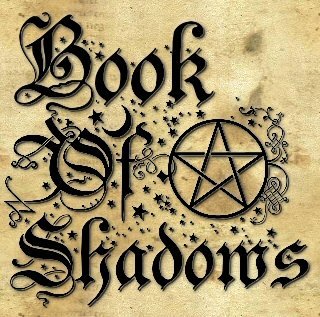





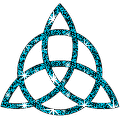
















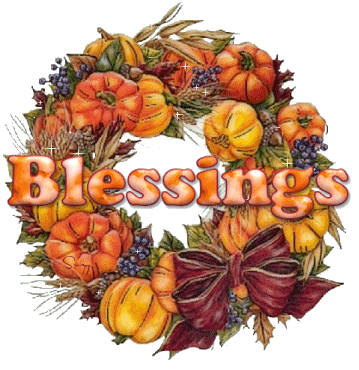
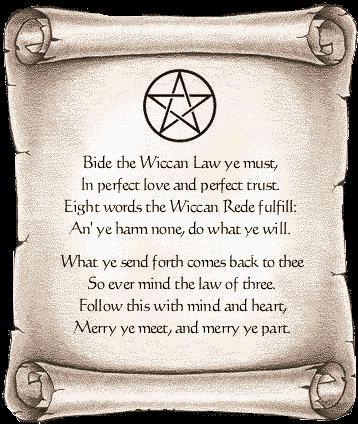









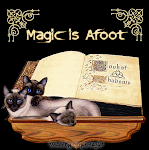


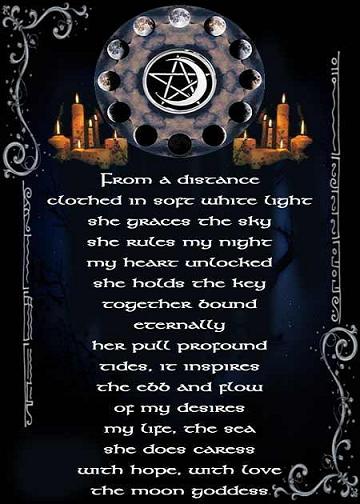




1 comment:
This is really amazing...during a Reiki session (which I was receiving for a change) Isis came to me. I didn't really understand why...until now. Amazing how divine timing works!
Namaste
Post a Comment